The document discusses the software development lifecycle (SDLC) process. It describes the traditional five phases of the SDLC and how it has evolved to seven phases. Each phase is explained in detail, including planning, analysis, design, development, integration and testing, implementation, and operations and maintenance. Different SDLC models like waterfall, iterative, and agile are also summarized. The agile manifesto and scrum framework are introduced as part of the agile methodology. Key terms related to SDLC documentation are defined in a glossary.
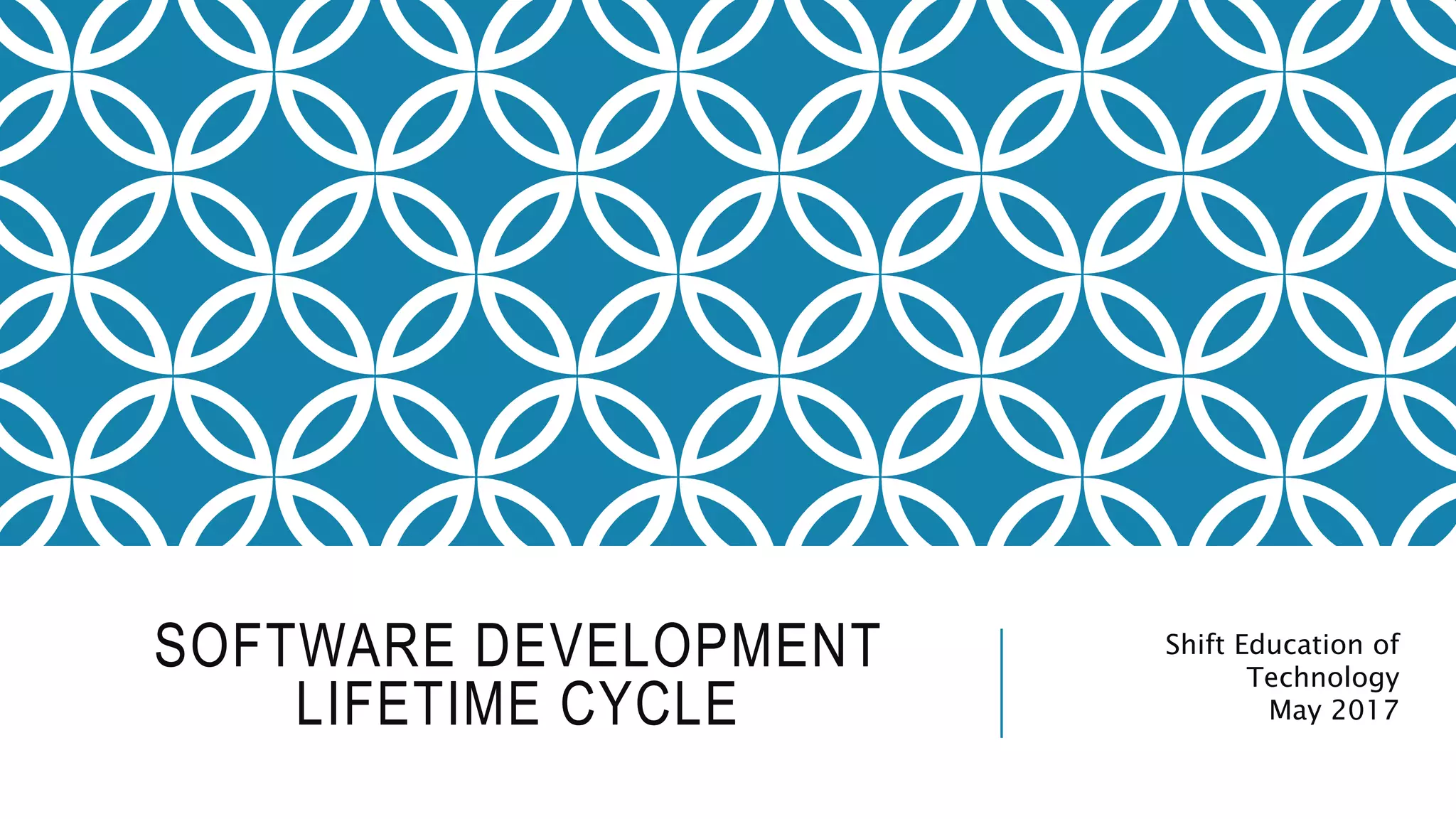
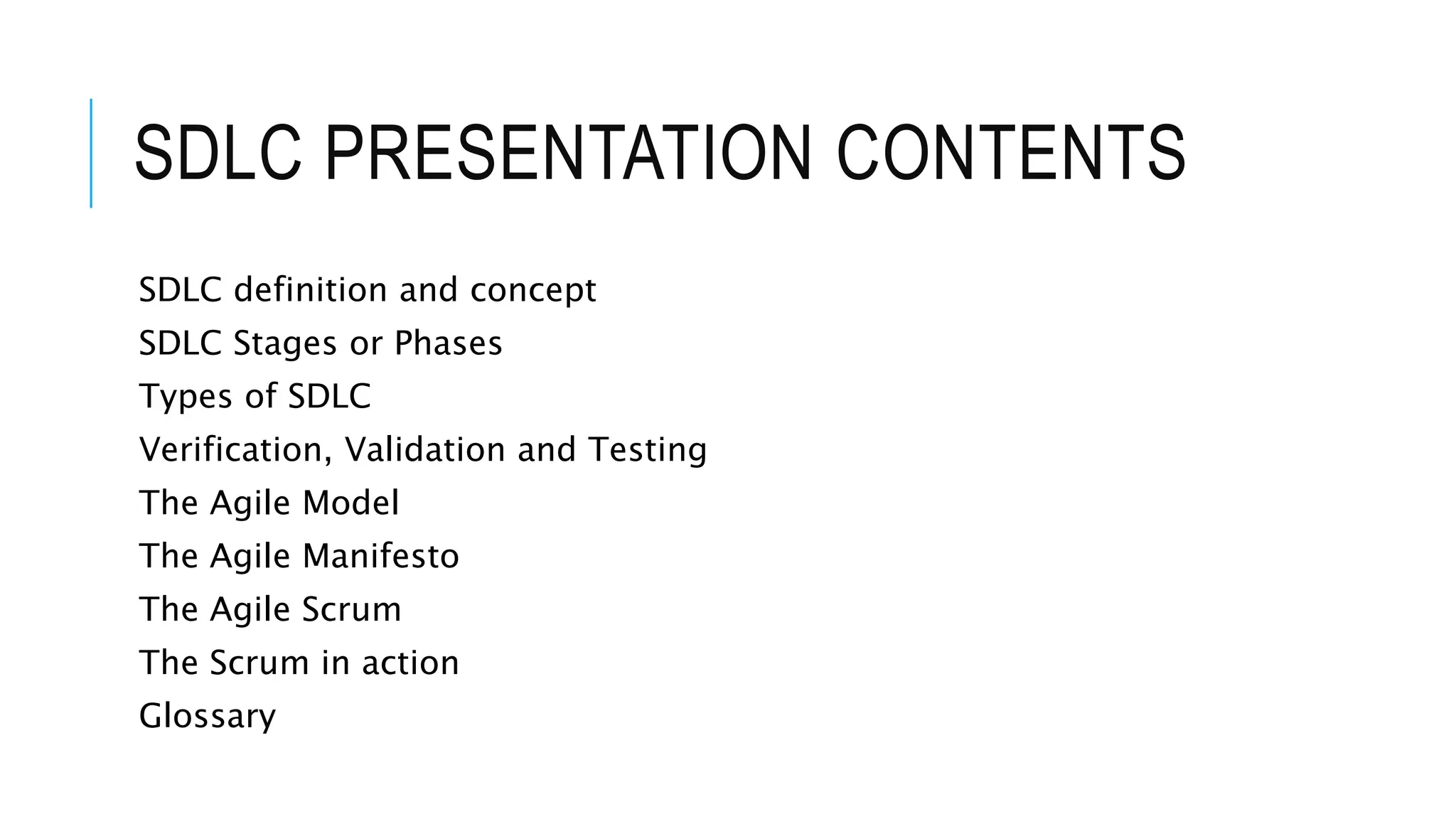
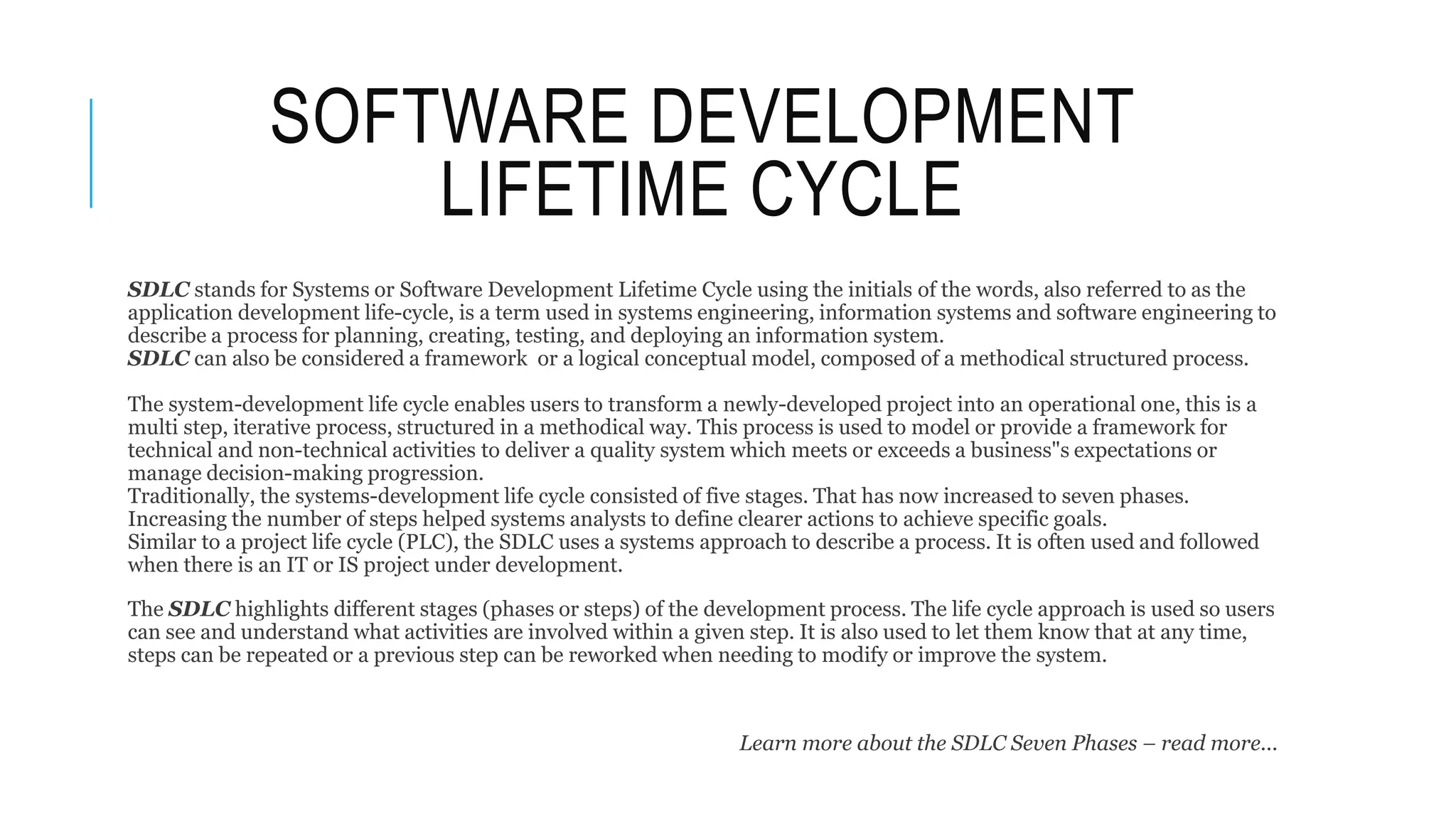

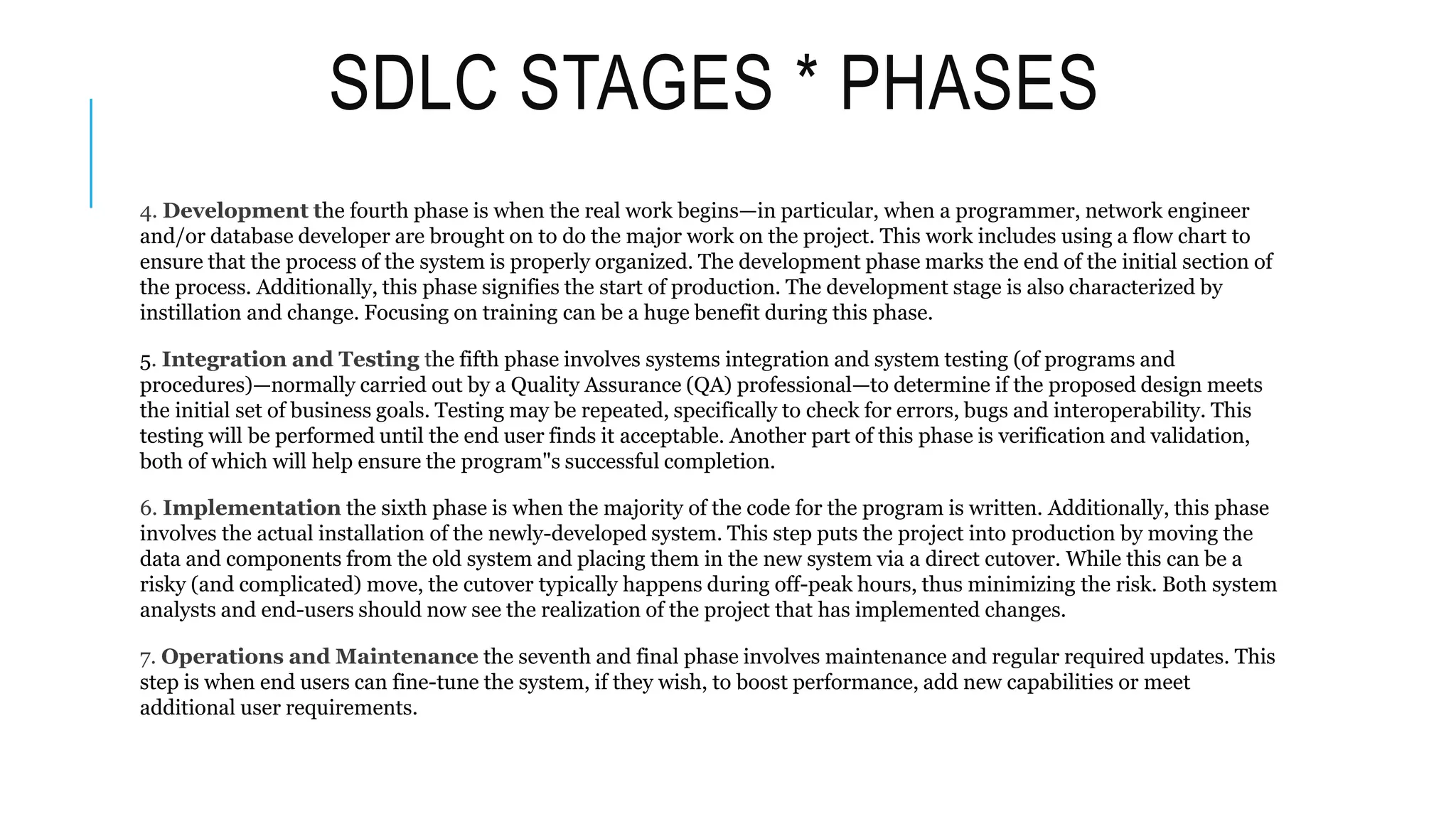
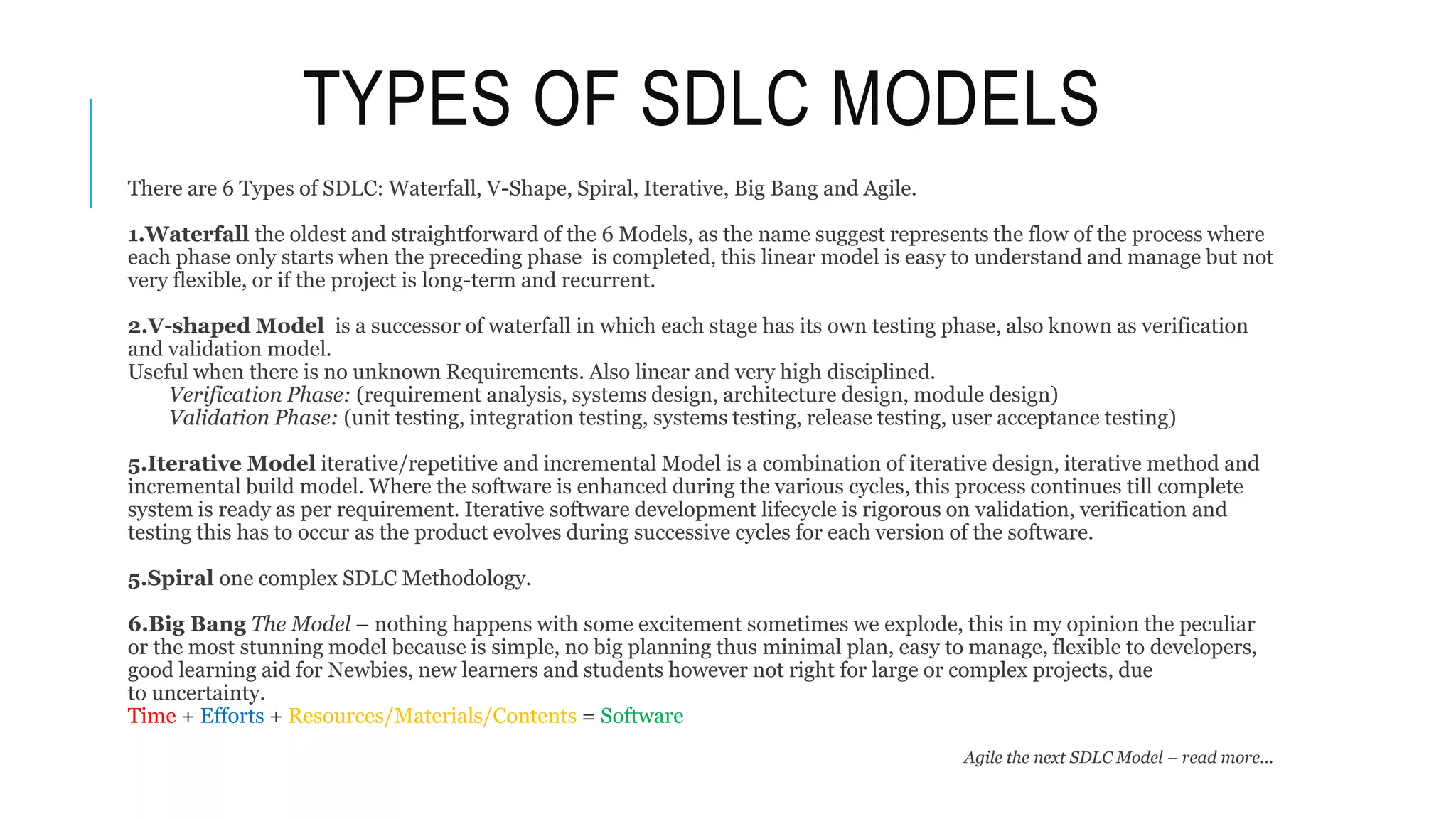
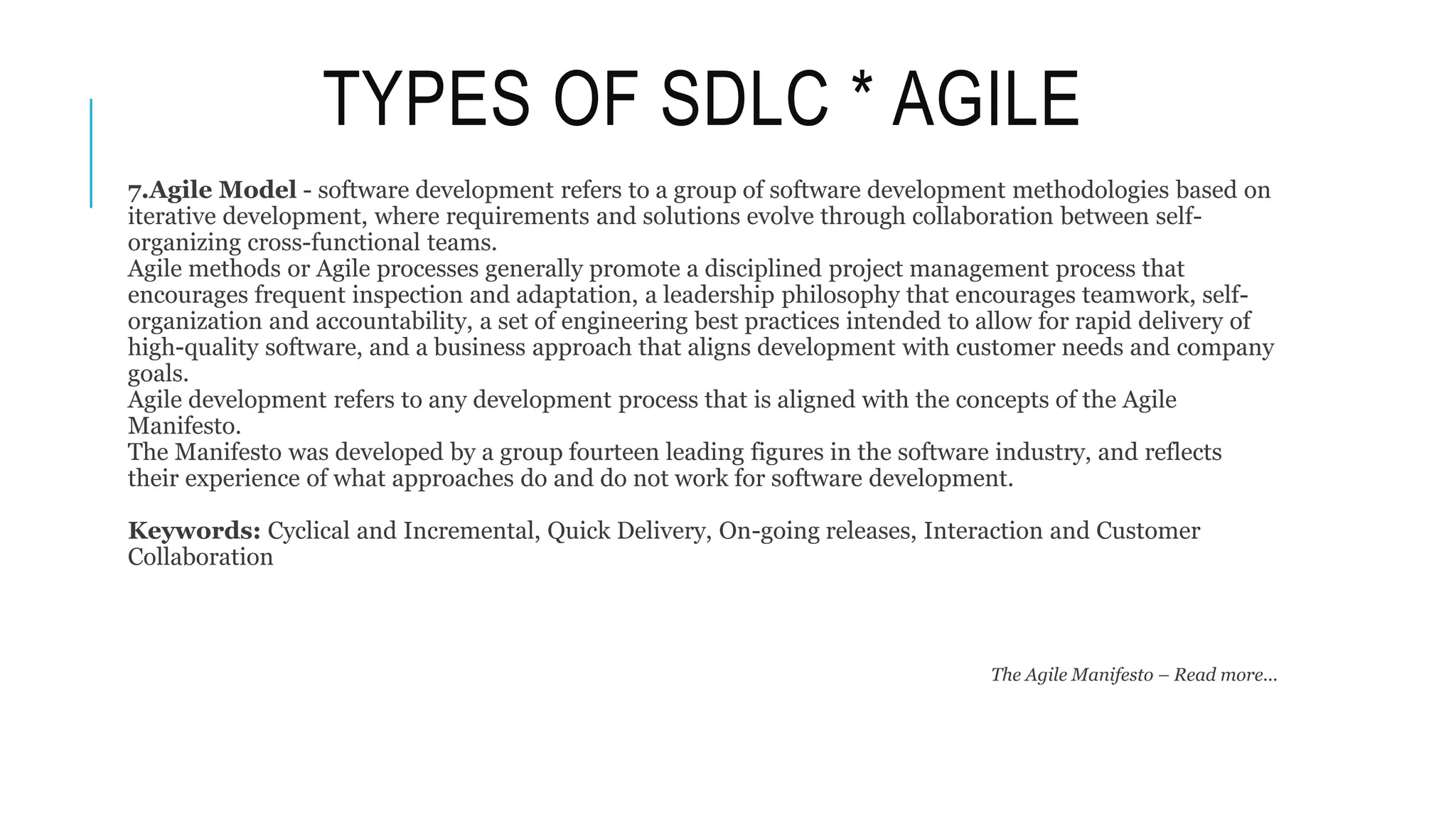
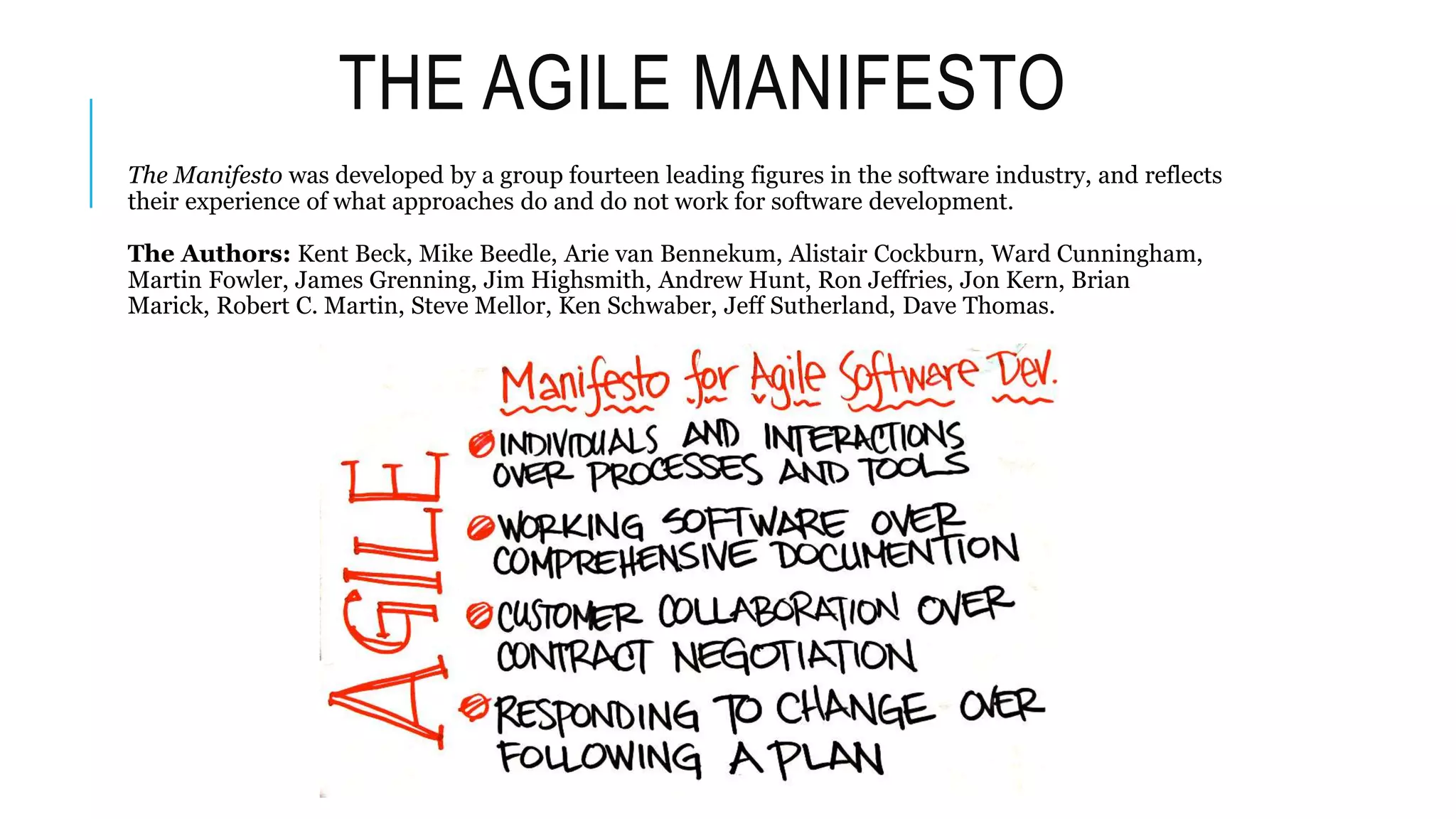
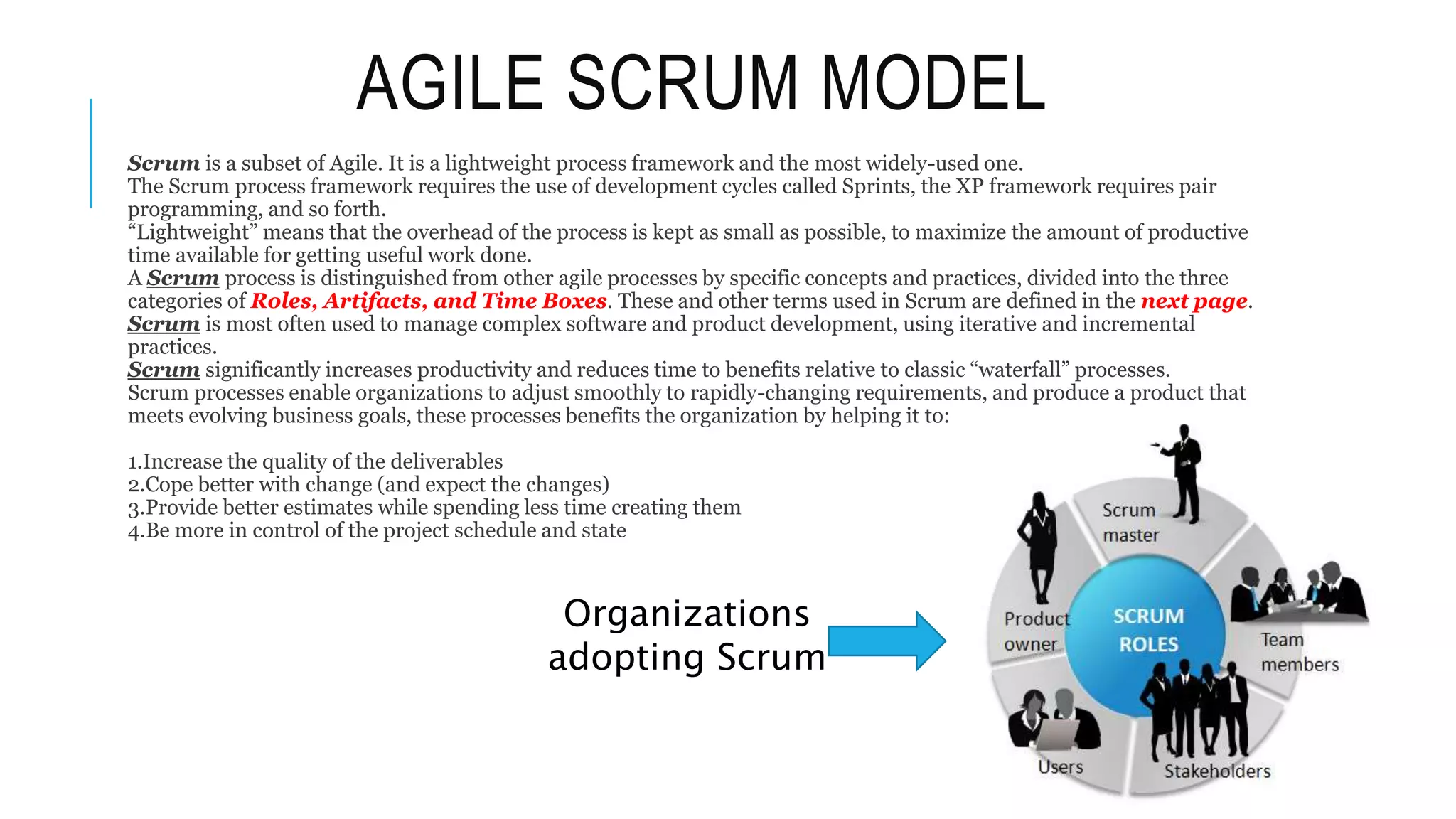
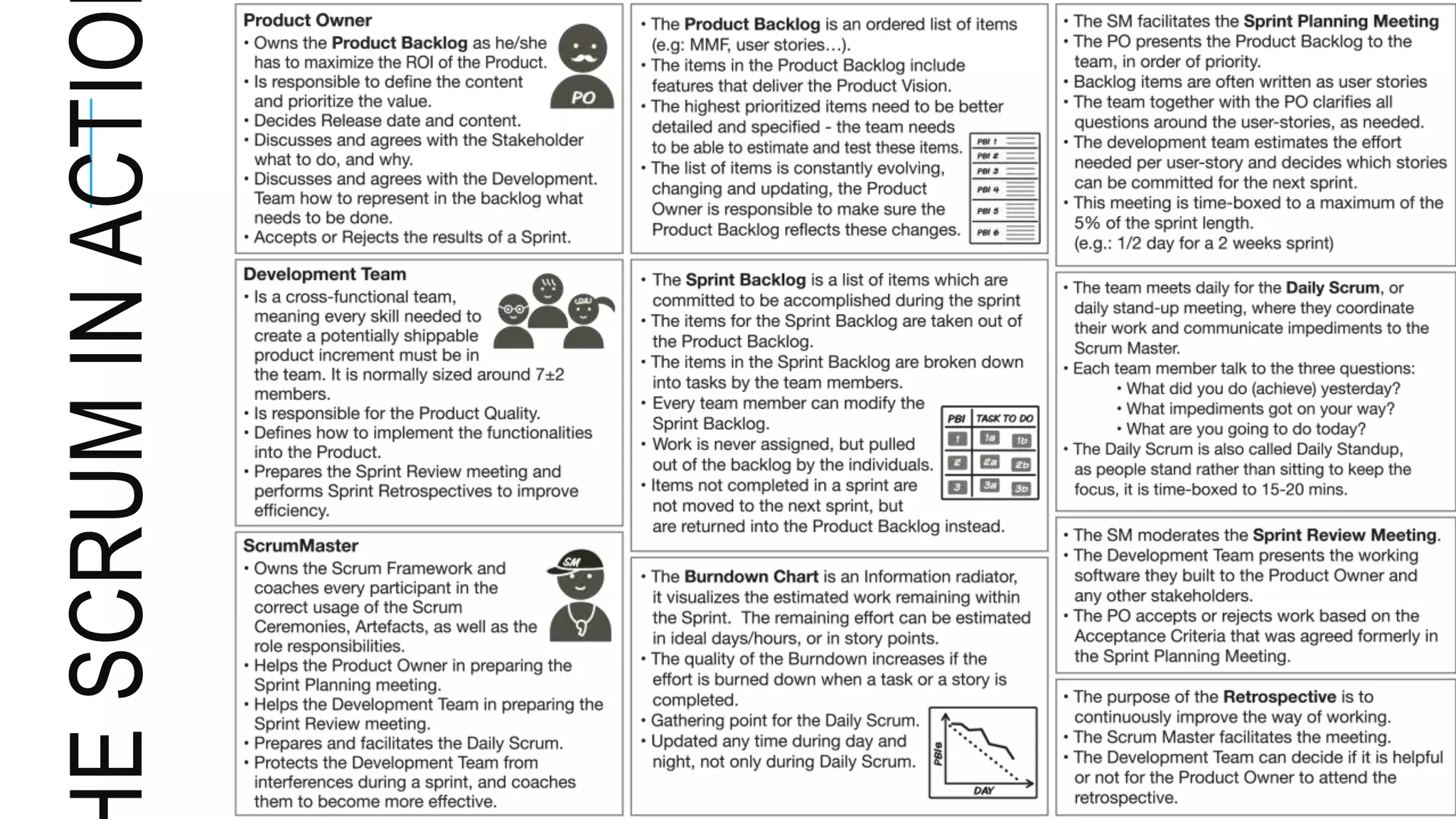
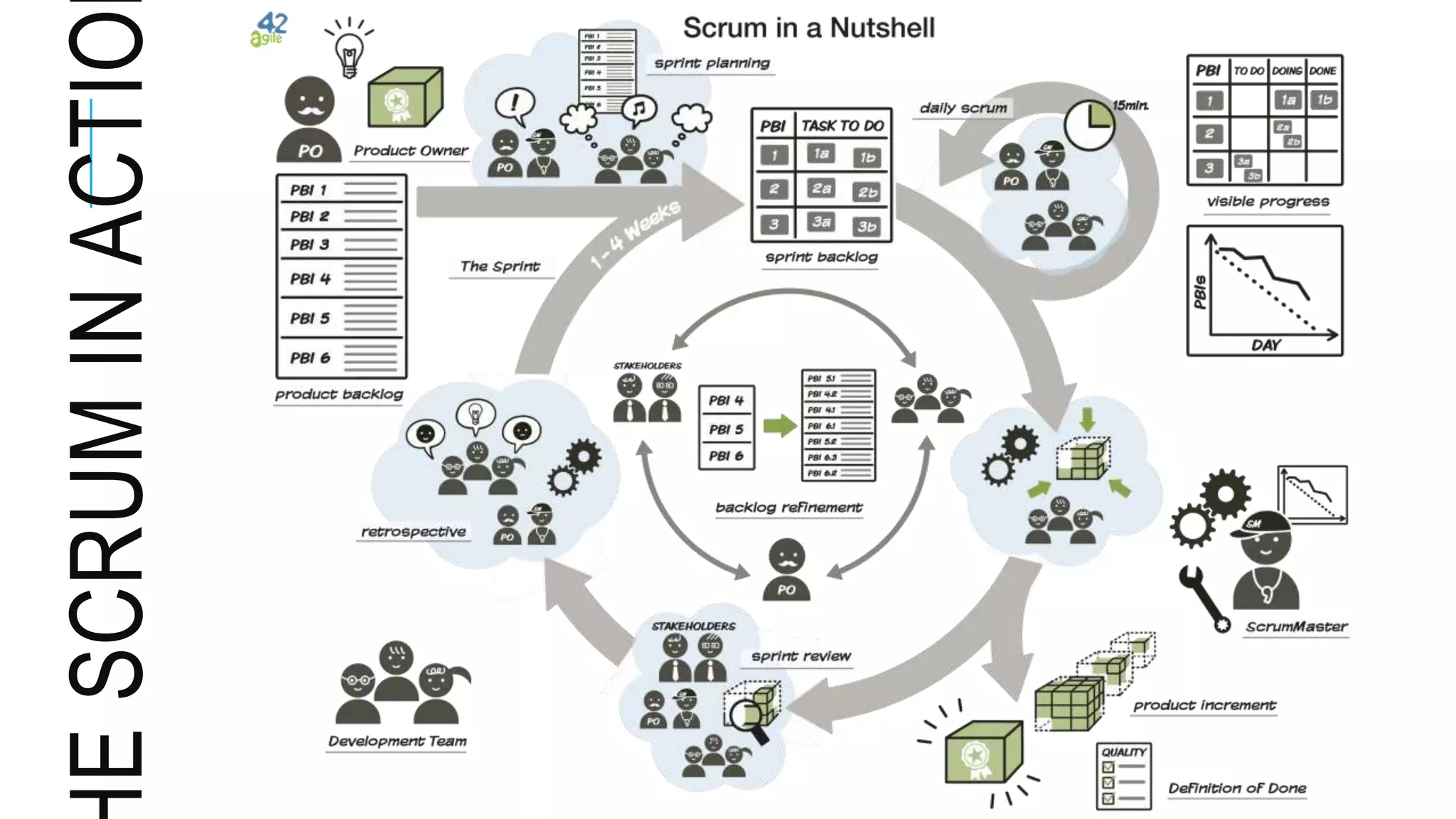
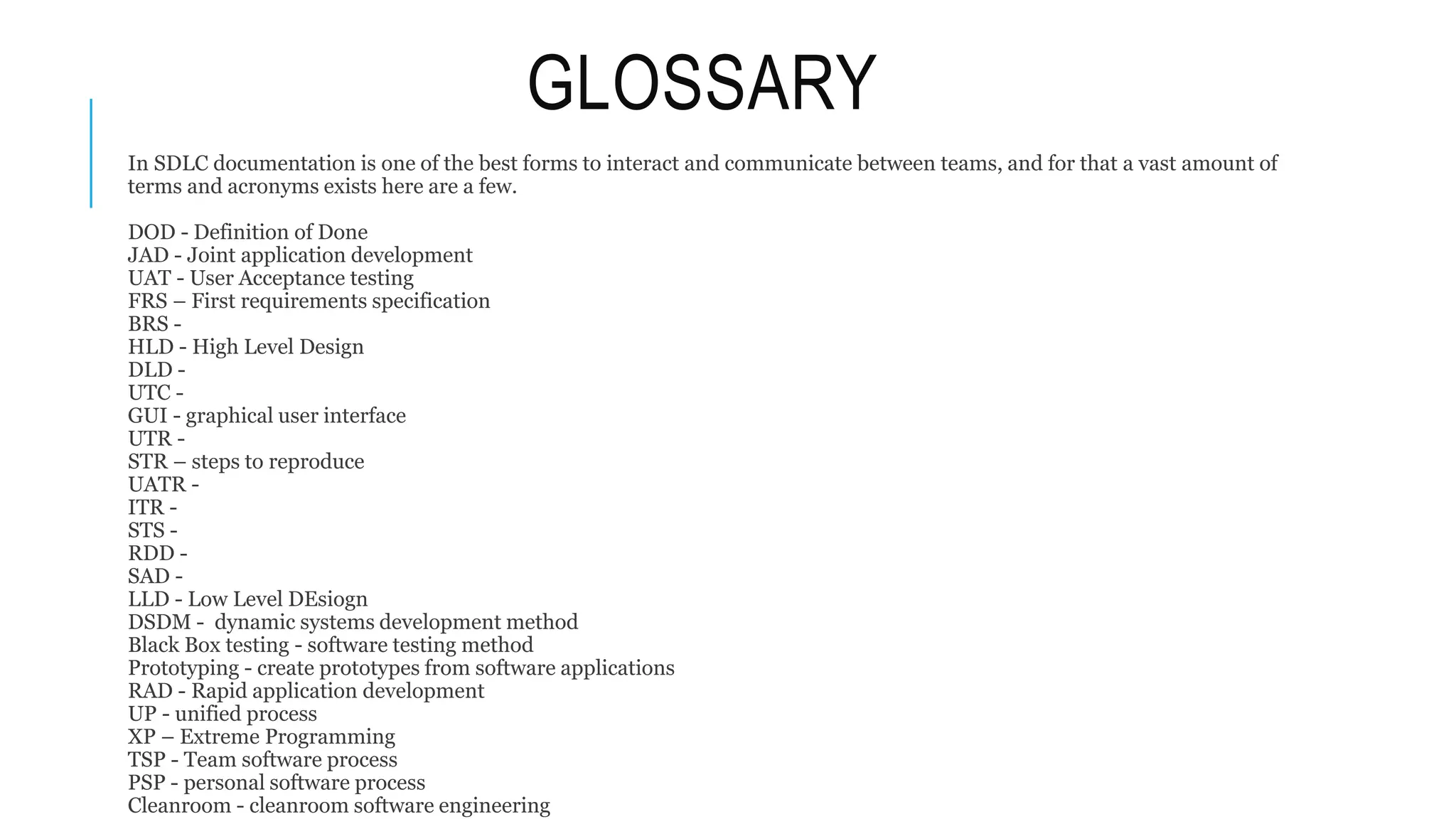
![CONCLUSOIN
Importance of the SDLC
If a business determines a change is needed during any phase of the SDLC, the company might have to proceed through all
the above life cycle phases again. The life cycle approach of any project is a time-consuming process. Even though some
steps are more difficult than others, none are to be overlooked. An oversight could prevent the entire system from
functioning as planned.
Systems development specialists at Innovative Architects [3] possess extensive experience in managing these type of
projects. If you have a situation at your organization and you think a customized software solution may be what you need,
contact us today. Consultants at Innovative Architects will be able to quickly guide you through each of these steps,
ensuring you can have your new system online as soon as possible.](https://image.slidesharecdn.com/sdlcpresrafaelsa-171030213200/75/SDLC-Apresentacao-Shift-Education-of-Technology-13-2048.jpg)